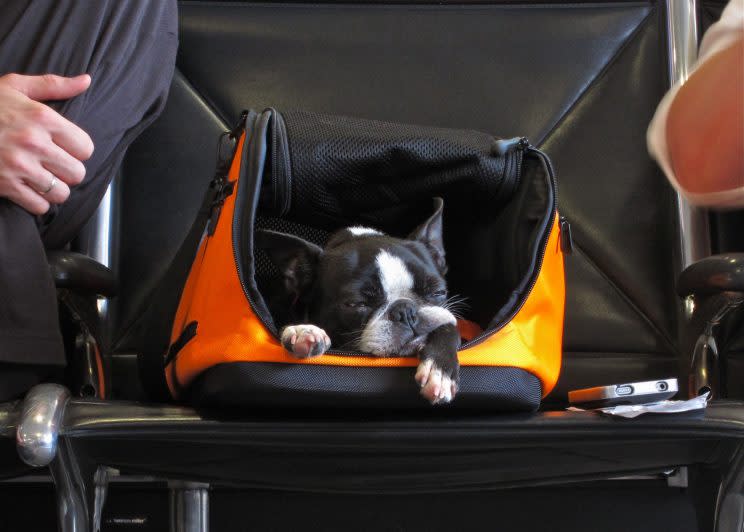Why it’s safer and cheaper not to fly with your pet

You might consider your pet to be a part of the family, but you should probably think twice about taking them on an airplane with you.
On April 19, a giant rabbit named Simon died in the cargo hold of a United Airlines (UAL) flight from London’s Heathrow airport to Chicago’s O’Hare International. The animal had just passed a health screen with flying colors, so its owner was confused by its sudden death. The incident is currently under investigation.
Unfortunately, Simon’s death is not totally uncommon. The Department of Transportation reports that 26 animals died on planes in 2016, with United Airlines topping the list with 9 deaths and 14 injuries. Delta transported 81,070 animals in 2016, with 5 deaths and 5 injuries. American transferred 80,888 animals, and suffered 4 deaths and 1 injury.
While small pets are allowed to fly in the airplane cabin for a fee (as long as they fit in a carrier under the seat), most airlines require larger animals to be checked as baggage and transported in the cargo area. This experience has proved to be dangerous for pets because of unpredictable temperature changes, rough handling, dehydration, and stress on the animal. Additionally, short-snouted dogs like pugs and bulldogs can have difficulty breathing in this environment.
So is it really worth it to put your pet and family through the potential trauma of flying in the cargo area of a plane? Most animal advocacy groups say no. “If you can’t travel by car, your pet will probably be healthier and happier if you leave them behind under the care of a pet sitter or boarding kennel,” the Humane Society says.
There could be a cheaper option
First, most airlines require health certificates for your pet or service animal to travel. According to VetInfo.com, the certificate involves a veterinary consultation and vaccines, which can cost anywhere from $35 to $200, depending if your pet’s shots are up to date.
There are also hefty fees associated with traveling with your animal. If you have a small pet weighing less than 20 pounds, most airlines will charge you a one-way price of $125 to $150 to bring them on the flight. If you have a bigger pet, many airlines will require your animal to travel in cargo. This will cost anywhere from $150 to $600 depending on the airline, size of the dog, and destination.
For example, Delta’s (DAL) animal cargo service charges a whopping $655 for a one-way ticket to transport a 70-pound golden retriever from Chicago’s O’Hare airport to Orlando, Fla. Add in the cost of your veterinary consultation (up to $150), and you could spend almost $1,500 to bring your pet on vacation.
Alternatively, PetCareRx calculates that the cost of putting your dog in a kennel, or boarding facility, costs an average of $25 to $50 a day (depending where you live). Most kennels include meals, water, bedding, walks and social interaction with other dogs.
If you have that same 70-pound golden retriever, you could leave it at Paradise 4 Paws kennel at O’Hare airport for $55 a day, totaling $385 for the week. Here, your pet will be safe, fed, and played with. Owners can even watch a webcam to check in on their furry friends.
Ultimately, the decision to travel with your animal is up to you. If you do decide to travel with your pet in the cargo hold of a plane, the Humane Society offers a list of reminders to ensure the health and safety of your animal.
But if you want some peace of mind, and more money to spend on vacation, it just might better to leave Fido at home.
Brittany is a reporter at Yahoo Finance.
Flying with your pet? Here’s how much it will cost.


